|
|
|
Sort Order |
|
|
|
Items / Page
|
|
|
|
|
|
|
| Srl | Item |
| 1 |
ID:
116703


|
|
|
|
|
| Publication |
2012.
|
| Summary/Abstract |
A projection of future energy consumption is a vital input to many analyses of economic, energy, and environmental policies. We provide a benchmark projection which can be used to evaluate any other projection. Specifically, we base our projection of future energy consumption on its historical trend, which can be identified by an experience model. We compare our projection with forecasts by the U.S. Energy Information Administration (EIA) for eight countries-U.S., China, India, Brazil, Japan, South Korea, Canada, and Mexico. We find that the EIA's projections are lower than ours in the case of China, the U.S., India, Japan, and Mexico. This indicates that for these five countries, the EIA uses assumptions which cannot be rationalized by historical data.
|
|
|
|
|
|
|
|
|
|
|
|
|
|
|
|
| 2 |
ID:
125550


|
|
|
|
|
| Publication |
2013.
|
| Summary/Abstract |
This study discusses the causes of the increase in Japan's energy intensity, defined as energy consumption divided by GDP, since the early 1990s. The significant reduction in Japan's energy intensity ceased in the early 1980s and has even slightly increased since the early 1990s, indicating that Japan seemingly stopped taking aggressive action to improve energy use. However, further analysis at prefecture level and sector level provides additional insight on energy intensity trends. To analyze the causes of the increase in Japan's energy intensity, energy intensity is decomposed into energy efficiency (improvements in energy efficiency) and energy activity (structural changes from the secondary sector to the tertiary sector of the economy). Our result indicates that the non-uniform energy intensity trends between prefectures are attributed to a high variability in energy efficiency. At sector level, we estimate the income elasticity of energy consumption in each sector and find that a structural change in energy consumption behaviors occurred in all sectors at different time points. The industrial sector and commercial sector became less energy efficient after 1981 and 1988, respectively, which is presumably responsible for the deterioration of Japan's energy intensity since the early 1990s.
|
|
|
|
|
|
|
|
|
|
|
|
|
|
|
|
| 3 |
ID:
103348


|
|
|
|
|
| Publication |
2011.
|
| Summary/Abstract |
From 1980 to 2002, China experienced a 5% average annual reduction in energy consumption per unit of gross domestic product (GDP). With a dramatic reversal of this historic relationship, energy intensity increased 5% per year during 2002-2005. China's 11th Five Year Plan (FYP) set a target of reducing energy intensity by 20% by 2010. This paper assesses selected policies and programs that China has instituted to fulfill the national goal, finding that China made substantial progress and many of the energy-efficiency programs appear to be on track to meet - or in some cases exceed - their energy-saving targets. Most of the Ten Key Projects, the Top-1000 Program, and the Small Plant Closure Program will meet or surpass the 11th FYP savings goals. China's appliance standards and labeling program has become very robust. China has greatly enhanced its enforcement of new building energy standards but energy-efficiency programs for buildings retrofits, as well as the goal of adjusting China's economic structure, are failing. It is important to maintain and strengthen the existing energy-saving policies and programs that are successful while revising programs or adding new policy mechanisms to improve the programs that are not on track to achieve the stated goals.
|
|
|
|
|
|
|
|
|
|
|
|
|
|
|
|
| 4 |
ID:
113461


|
|
|
|
|
| Publication |
2012.
|
| Summary/Abstract |
This paper uses the econometrics of endogenous structural breaks to examine changes in energy intensity trends for OECD countries over 1960-2009. Nearly all OECD countries currently have significant negatively trending energy-GDP ratios; but for several countries those negative trends are recent, and two countries have recent significant positive trends. For several countries, energy intensity had a significant positive trend followed by a break and then a significant negative trend. Those break-dates, however, appear to have little to do with level of development (GDP per capita). Alternatively, the volatile energy prices of the 1970s and early 1980s played a role in many of the countries that experienced inverted-V breaks. These findings have implications for future modeling and forecasting of energy consumption as well as for the role of energy price policy in developed and developing countries.
|
|
|
|
|
|
|
|
|
|
|
|
|
|
|
|
| 5 |
ID:
121290
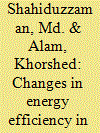

|
|
|
|
|
| Publication |
2013.
|
| Summary/Abstract |
This paper provides an empirical estimation of energy efficiency and other proximate factors that explain energy intensity in Australia for the period 1978-2009. The analysis is performed by decomposing the changes in energy intensity by means of energy efficiency, fuel mix and structural changes using sectoral and sub-sectoral levels of data. The results show that the driving forces behind the decrease in energy intensity in Australia are efficiency effect and sectoral composition effect, where the former is found to be more prominent than the latter. Moreover, the favourable impact of the composition effect has slowed consistently in recent years. A perfect positive association characterizes the relationship between energy intensity and carbon intensity in Australia. The decomposition results indicate that Australia needs to improve energy efficiency further to reduce energy intensity and carbon emissions.
|
|
|
|
|
|
|
|
|
|
|
|
|
|
|
|
| 6 |
ID:
096221
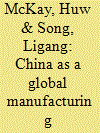

|
|
|
|
|
| Publication |
2010.
|
| Summary/Abstract |
This study examines the nature and consequences of China's rise to the center of world economic affairs through manufacturing-led development. Our historical analysis shows that China is still well short of the point in its developmental process where its growth might be reasonably expected to slow, or the energy, resource and carbon intensity of growth to recede. The study argues that the current trajectory of industrialization will have to be altered when China becomes more actively engaged in dealing with structural issues at home and abroad against the background of the unwinding of global imbalances. One profitable strategy that China might employ would be to approximate the incredibly fruitful mass-market integration efforts of the USA that eventually elevated it to its position of global primacy. The cyclical re-emergence of excess capacity in Chinese heavy industry, serious questions about the medium term ability of other major regions to accommodate further large gains in Chinese market share, and the stark conflict between the contemporary style of industrial development and the health of the biosphere indicate strongly that now is the time to catalyze the required adjustment and reform processes that will underpin sustainable long-run prosperity.
|
|
|
|
|
|
|
|
|
|
|
|
|
|
|
|
| 7 |
ID:
116740


|
|
|
|
|
| Publication |
2012.
|
| Summary/Abstract |
This study analyzes China's industrial energy consumption trends from 1996 to 2010 with a focus on the impact of the Top-1000 Enterprises Energy-Saving Program and the Ten Key Energy-Saving Projects. From 1996 to 2010, China's industrial energy consumption increased by 134%, even as the industrial economic energy intensity decreased by 46%. Decomposition analysis shows that the production effect was the dominant cause of the rapid growth in industrial energy consumption, while the efficiency effect was the major factor slowing the growth of industrial energy consumption. The structural effect had a relatively small and fluctuating influence. Analysis shows the strong association of industrial energy consumption with the growth of China's economy and changing energy policies. An assessment of the Top-1000 Enterprises Energy-Saving Program and the Ten Key Energy-Saving Projects indicates that the economic energy intensity of major energy-intensive industrial sub-sectors, as well as the physical energy intensity of major energy-intensive industrial products, decreased significantly during China's 11th Five Year Plan (FYP) period (2006-2010). This study also shows the importance and challenge of realizing structural change toward less energy-intensive activities in China during the 12th FYP period (2011-2015).
|
|
|
|
|
|
|
|
|
|
|
|
|
|
|
|
| 8 |
ID:
150670
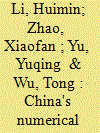

|
|
|
|
|
| Summary/Abstract |
In China, the national target for energy intensity reduction, when integrated with target disaggregation and information feedback systems, constitutes a numerical management system, which is a hallmark of modern governance. This paper points out the technical weaknesses of China's current numerical management system. In the process of target disaggregation, the national target cannot be fully disaggregated to local governments, sectors and enterprises without omissions. At the same time, governments at lower levels face pressure for reducing energy intensity that exceeds their respective jurisdictions. In the process of information feedback, information failure is inevitable due to statistical inaccuracy. Furthermore, the monitoring system is unable to correct all errors, and data verification plays a limited role in the examination system. To address these problems, we recommend that the government: use total energy consumption as the primary indicator of energy management; reform the accounting and reporting of energy statistics toward greater consistency, timeliness and transparency; clearly define the responsibility of the higher levels of government.
|
|
|
|
|
|
|
|
|
|
|
|
|
|
|
|
| 9 |
ID:
150376
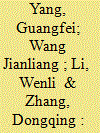

|
|
|
|
|
| Summary/Abstract |
China has become the largest energy consumer worldwide, and it is important to study the energy intensity to realize the sustainable development goal of China. This paper focuses on investigating the influential factors of China's energy intensity using provincial-level panel data from 1985 to 2012. More specifically, we try to identify which factor is relatively more important to pay attention to. A novel approach based on evolutionary computation is proposed to intelligently mine the intrinsic relations between observed phenomena and to let the important factors automatically emerge from the discovered nonlinear models. However, due to China's vast territory and significant heterogeneities, this approach may fail to examine some detailed or hidden information when analyzing the country as a whole. Instead, we concentrate on the provincial level because the provinces play vital roles in reducing energy intensity in China. From our analytical results, the main findings are as follows: (1) the Total Population is the most important influential factor across China's provinces, while the Energy Price Index has the least impact; and (2) the provinces could be naturally classified into four categories based on the primary factors emerged from data, and such classification could reveal more about the true underlying features of each area.
|
|
|
|
|
|
|
|
|
|
|
|
|
|
|
|
| 10 |
ID:
093541


|
|
|
|
|
| Publication |
2010.
|
| Summary/Abstract |
Energy intensity in Spain has increased since 1990, while the opposite has happened in the EU15. Decomposition analysis of primary energy intensity ratios has been used to identify which are the key sectors driving the Spanish evolution and those responsible for most of the differences with the EU15 energy intensity levels. It is also a useful tool to quantify which countries and economic sectors have had most influence in the EU15 evolution. The analysis shows that the Spanish economic structure is driving the divergence in energy intensity ratios with the EU15, mainly due to strong transport growth, but also because of the increase of activities linked to the construction boom, and the convergence to EU levels of household energy demand. The results can be used to pinpoint successful EU strategies for energy efficiency that could be used to improve the Spanish metric.
|
|
|
|
|
|
|
|
|
|
|
|
|
|
|
|
| 11 |
ID:
176686
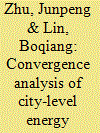

|
|
|
|
|
| Summary/Abstract |
Understanding the convergence patterns of energy intensity and the drivers leading to the club convergence are of great significance for local governments to implement targeted policies to improve energy efficiency. With this in mind, we begin with the collection of energy consumption data of 193 Chinese cities at prefecture level or above, then we adopt the log t-test and clustering algorithm to investigate convergence characteristics of energy intensity. Besides, the Ordered Probit model is adopted to investigate the drivers that affect the formulation of convergent club. We identify four convergent clubs among total 193 cities, and these clubs show great differences in energy intensity. Marketization degree, population density, foreign direct investment, resource endowment, and industrial structure are recognized as the drivers of the formation of convergence clubs. This paper adds more evidence to understand the energy intensity gap, we propose that upgrading the industrial structure, exerting economic assemble advantage, enhancing the level of opening up, and improving the marketization level are favorable measures to reduce energy intensity.
|
|
|
|
|
|
|
|
|
|
|
|
|
|
|
|
| 12 |
ID:
169748
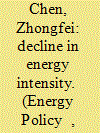

|
|
|
|
|
| Summary/Abstract |
Global energy intensity has decreased significantly during the past two decades. Against this background, this study aims to investigate a novel relationship between development of the financial system (financial development) and energy intensity and explore the underlying mechanisms influencing the relationship between these two indicators. Using long-term country-level data and a two-way fixed-effect model, this study reveals that financial development exerts a significant negative effect on energy intensity for non-OECD countries. However, financial development has a limited impact on energy reduction for OECD countries as a result of the mature financial systems of these developed economies. The estimated results are robust for various specifications. In addition, we reveal a U-shaped relationship between financial development and energy intensity in developing countries. Our results suggest that the influence of financial development on energy intensity reduction can be achieved through technological progress and innovation. Our findings suggest that stimulating financial development is an efficient way to reduce national energy intensity, and specific long-term policies must be established in order to balance the trade-off between financial development, economic growth, and energy intensity.
|
|
|
|
|
|
|
|
|
|
|
|
|
|
|
|
| 13 |
ID:
103488
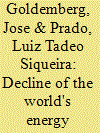

|
|
|
|
|
| Publication |
2011.
|
| Summary/Abstract |
Energy intensity of the total primary energy supply (TPES), total final energy consumption (TFC) and LOSSES in the conversion from TPES to TFC were analyzed for the World, OECD and Rest of the World (ROW) countries. LOSSES increased significantly for all groups of countries due to the increase of electricity production from coal in the period studied (1971-2008). Electricity share final consumption almost doubled, increasing from 8.8% to 17.2% in the period studied. However the energy intensity of LOSSES remained practically constant, which reflects the fact that the efficiency of electricity generation from coal (the main source of electricity) remained practically constant in that period. Despite the attractiveness of end-use devices running on electricity such as computers, which is typical of modern societies, the CO2 emissions are bound to increase unless coal is replaced by less carbon emitting sources such as natural gas, renewables and nuclear energy.
|
|
|
|
|
|
|
|
|
|
|
|
|
|
|
|
| 14 |
ID:
111318


|
|
|
|
|
| Publication |
2012.
|
| Summary/Abstract |
Between 1989 and 2004, energy consumption for road freight in the UK is estimated to have increased by only 6.3%. Over the same period, UK GDP increased by 43.3%, implying that the aggregate energy intensity of UK road freight fell by 25.8%. During this period, therefore, the UK achieved relative but not absolute decoupling of road freight energy consumption from GDP. Other measures of road freight activity, such as tonnes lifted, tonnes moved, loaded distance travelled and total distance travelled also increased much slower than GDP. The main factor contributing to the observed decoupling was the declining value of manufactured goods relative to GDP. Reductions in the average payload weight, the amount of empty running and the fuel use per vehicle kilometre also appear to have made a contribution, while other factors have acted to increase aggregate energy intensity. The results demonstrate that the UK has been more successful than most EU countries in decoupling the environmental impacts of road freight transport from GDP. However, this is largely the unintended outcome of various economic trends rather than the deliberate result of policy.
|
|
|
|
|
|
|
|
|
|
|
|
|
|
|
|
| 15 |
ID:
163526


|
|
|
|
|
| Summary/Abstract |
Canada has numerous climatic and geographical regions and the Canadian housing stock (CHS) is diversified in terms of vintage, geometry, construction materials, envelope, occupancy, energy sources and heating, ventilation and air conditioning system and equipment. Therefore, strategies to achieve net zero energy (NZE) status with the current stock of houses need to be devised considering the unique characteristics of the housing stock, the economic conditions and energy mix available in each region. Identifying and assessing pathways for converting existing houses to NZE buildings at the housing stock level is a complex and multifaceted problem and requires extensive analysis on the impact of energy efficiency and renewable/alternative energy technology retrofits on the energy use and GHG emissions of households.
|
|
|
|
|
|
|
|
|
|
|
|
|
|
|
|
| 16 |
ID:
174979
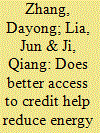

|
|
|
|
|
| Summary/Abstract |
Using firm-level data from the World Bank Enterprise Survey, this study investigates whether access to credit of a sample of Chinese manufacturing firms can affect the intensity of their energy use. Our empirical results show that firms with access to credit are associated with lower energy efficiency. In other words, firms with credit access tend to have significantly higher energy use per unit of output. This finding is robust to different measures of energy intensity and to varying specification of models. However, we find that local government environmental regulations can mitigate the financing-energy relationship: cities with stronger environmental regulations are able to reverse the relationship, in other words, firms’ access to financing is significantly associated with a reduction in their energy intensity. Our findings have important policy implications for Chinese authorities seeking more environmentally friendly development, and our conclusions suggest that energy efficiency should be considered as an additional condition for credit allocation to firms.
|
|
|
|
|
|
|
|
|
|
|
|
|
|
|
|
| 17 |
ID:
171519
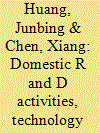

|
|
|
|
|
| Summary/Abstract |
Domestic research and development (R&D) activities are critical for the development of China's low-carbon economy. The higher level of R&D inputs, the more advanced technology will generate, therefore contributing to the energy intensity reduction. In empirical studies, the effect of R&D activities on energy intensity has been investigated extensively, however, most studies consider R&D activities as a whole. Consequently, we lack detailed information on the role of each R&D player and stage for appropriate policy consideration. Furthermore, the effects of R&D activities may be determined by factors affecting technology absorptive ability. To understand the influence of R&D activities on energy intensity, we employ linear and nonlinear analyses using a Chinese provincial dataset covering 2000–2016. The linear analysis suggests that domestic R&D is powerful in reducing energy intensity. However, this positive effect is mainly from experimental and developmental R&D activities rather than basic R&D and application activities. Further, R&D activities by industrial enterprises have a stronger effect on energy intensity reduction than those of higher education and independent R&D institutions. Additional study using panel threshold models suggests that the effects are not linear but experience structural breaks when human capital stock and full-time equivalent (FEP) R&D personnel are at different levels.
|
|
|
|
|
|
|
|
|
|
|
|
|
|
|
|
| 18 |
ID:
117262
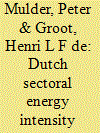

|
|
|
|
|
| Publication |
2013.
|
| Summary/Abstract |
This paper makes use of a new dataset to investigate energy intensity developments in the Netherlands over the period 1987-2005. The dataset allows for a comparison with 18 other OECD countries. A key feature of our analysis is that we combine a cross-country perspective with a high level of sectoral detail, covering 49 sectors. Particularly innovative is our evaluation of energy intensity developments in a wide range of Service sectors. We find that across sectors, energy intensity levels in the Netherlands on average decreased only marginally, and increased in Services. This performance is in general worse than the OECD average, especially between 1987 and 1995. Changes in the sectoral composition of the economy play an important role in explaining aggregate trends. In the Manufacturing sector, about half of the efficiency improvements were undone by a shift towards a more energy-intensive industry structure. In contrast, in the Service sector efficiency decreased, which was undone for about one third by a shift towards a less energy-intensive sector structure.
|
|
|
|
|
|
|
|
|
|
|
|
|
|
|
|
| 19 |
ID:
101373
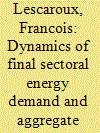

|
|
|
|
|
| Publication |
2011.
|
| Summary/Abstract |
This paper proposes a regional and sectoral model of global final energy demand. For the main end-use sectors of consumption (industrial, commercial and public services, residential and road transportation), per-capita demand is expressed as an S-shaped function of per-capita income. Other variables intervene as well, like energy prices, temperatures and technological trends. This model is applied on a panel of 101 countries and 3 aggregates (covering the whole world) and it explains fairly well past variations in sectoral, final consumption since the beginning of the 2000s. Further, the model is used to analyze the dynamics of final energy demand, by sector and in total. The main conclusion concerns the pattern of change for aggregate energy intensity. The simulations performed show that there is no a priori reason for it to exhibit a bell-shape, as reported in the literature. Depending on initial conditions, the weight of basic needs in total consumption and the availability of modern commercial energy resources, various forms might emerge.
|
|
|
|
|
|
|
|
|
|
|
|
|
|
|
|
| 20 |
ID:
125519


|
|
|
|
|
| Publication |
2013.
|
| Summary/Abstract |
In this paper, we use a panel of the 48 contiguous US states over the period 1970-2009 to examine the dynamics of electricity demand in addressing the four hypotheses set forth in the literature: growth, conservation, neutrality, and feedback. In doing so we provide both short-run and long-run elasticity estimates for electricity demand. Recent developments in nonstationary panel estimation techniques allow for heterogeneity in the coefficients while examining the direction of causality among electricity consumption, electricity prices, and income growth. In addition to the full sample, we also disaggregate the sample into three sectors: commercial, industrial, and residential. The short-run results provide evidence in favor of the growth hypothesis for the aggregate sample, as well as for the industrial sector. For the residential and commercial sectors, the conservation hypothesis is supported. Long-run results favor the conservation hypothesis. To ascertain differences in electricity demand relating to electricity intensity we also examine states based on their efficiency in electricity consumption. Overall, the results yield in favor of the growth hypothesis for low intensity states and conservation hypothesis for high intensity states.
|
|
|
|
|
|
|
|
|
|
|
|
|
|
|
|
|
|
|
|
|